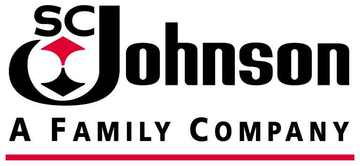Windex
Brand
Windex is a glass and hard-surface cleaner manufactured since 1933. S. C. Johnson acquired Windex in 1993 and has been manufacturing it since. The product was reformulated in 2006. The original Windex was colored a light, transparent shade of blue. Today there are varieties marketed in several colors and fragrances, with a number of additives such as vinegar, lemon, lime, or orange juice. When Windex was invented in 1933 by Harry R. Drackett, it was almost 100% solvent. It was highly flammable and had to be sold in metal cans. When modern surfactants were introduced after World War II, the product was reformulated. Windex was a 5% ammonia solution in 1989. The Sam Wise patent #3,463,735 lists example formulae, one of which is 4.0% isopropyl alcohol 1% ethylene glycol monobutyl ether, 0.1% sodium lauryl sulfate, 0.01% tetrasodium pyrophosphate, 0.05% of 28% ammonia, 1% of a dye solution, and 0.01% perfume. This formula was not only less expensive to manufacture, but allowed the product to be packaged in glass bottles and dispensed with a plastic sprayer. The popularity of Windex in the U.S. led to the generic use of the trademark for similar product, including those marketed under different brands.
Subject ID: 16400
MoreWindex is a glass and hard-surface cleaner manufactured since 1933. S. C. Johnson acquired Windex in 1993 and has been manufacturing it since. The product was reformulated in 2006. The original Windex was colored a light, transparent shade of blue. Today there are varieties marketed in several colors and fragrances, with a number of additives such as vinegar, lemon, lime, or orange juice. When Windex was invented in 1933 by Harry R. Drackett, it was almost 100% solvent. It was highly flammable and had to be sold in metal cans. When modern surfactants were introduced after World War II, the product was reformulated. Windex was a 5% ammonia solution in 1989. The Sam Wise patent #3,463,735 lists example formulae, one of which is 4.0% isopropyl alcohol 1% ethylene glycol monobutyl ether, 0.1% sodium lauryl sulfate, 0.01% tetrasodium pyrophosphate, 0.05% of 28% ammonia, 1% of a dye solution, and 0.01% perfume. This formula was not only less expensive to manufacture, but allowed the product to be packaged in glass bottles and dispensed with a plastic sprayer. The popularity of Windex in the U.S. led to the generic use of the trademark for similar product, including those marketed under different brands.
Subject ID: 16400
Subject ID: 16400
